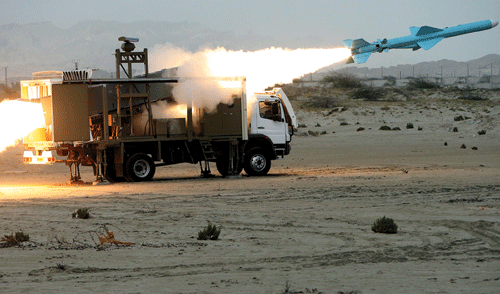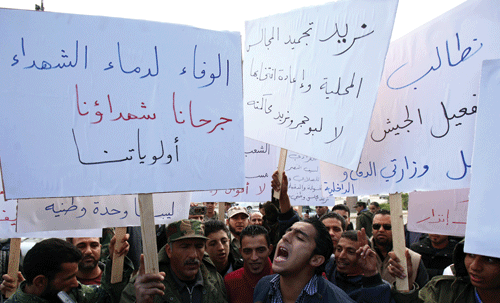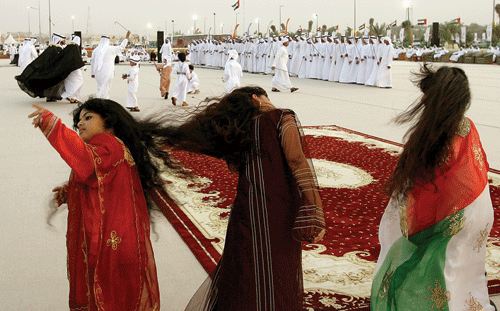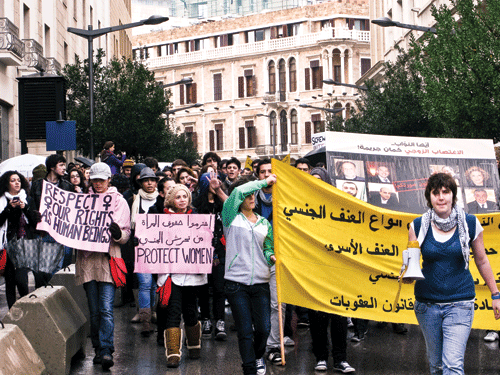The discovery of vast oil and gas reserves under the eastern Mediterranean seabed presents a new set of security problems in one of the most volatile corners of the world. Among them is the issue of divided Cyprus: the Turkish Republic of Cyprus has already warned its Greek competitor not to begin drilling for oil and gas before the unity of the island is resolved. But it is the potential dispute between Lebanon and Israel that has drawn most international attention — and apprehension.
Israel has moved much more quickly than Lebanon in tapping its potential oil and gas wealth, parceling up some 9,600 square kilometers off its northern coastline in a series of licensed exploration blocks. However, the problem lies in the differences between the proposed boundary lines marking the extent of the Exclusive Economic Zones (EEZs) — the area a state can claim for resource purposes — of Lebanon and Israel. Israel’s proposed line begins 17 kilometers north of the point proposed by Lebanon. In effect, this has left a disputed zone of approximately 854 square kilometers.
Resolving the dispute has reached an impasse for now. The United Nations, which regularly mediates disagreements between rival EEZ claims, is the best choice for mediating a solution. But Israel insists that any negotiations should be expanded to cover the Lebanon-Israel land border as well, clearly a non-starter for Beirut.
The lack of a negotiated solution has left both sides mulling the security implications. A little over a year ago, Israel drew up a maritime security plan costing between $40 million and $70 million to defend its oil and gas interests. Last month, the Israeli navy announced that its flotilla of missile boats will be responsible for protecting oil and gas rigs.
Of particular concern to Israel is the weaponry now available to Hezbollah and Syria which could inflict significant damage to offshore oil and gas infrastructure.
Hezbollah’s military component includes an amphibious warfare unit with cadres trained in underwater demolitions and seaborne insertions. It could be equated to, if you like, the United States Navy SEALs.
Details about the unit are vague. It is equipped with Zodiac inflatable boats and probably has access to some of the specialized vessels produced by Iran. They include torpedo-armed submersible or semi-submersible boats and swimmer dispersal vehicles, which are underwater torpedo-shaped vessels that transport frogmen to a target.
Israeli’s major worry, though, comes from the anti-ship missiles in the arsenals of Hezbollah and Syria, like the Noor cruise missile used on the third day of the 2006 war which disabled the INS Hanit, one of the Israeli navy’s top warships. The Noor is an Iranian reverse-engineered version of the Chinese C-802 missile. Until then, no one had imagined that Hezbollah had acquired anti-ship missiles.
Since the 2006 war, Hezbollah is believed to have received larger quantities of Noor missiles as well as more advanced systems. One of them, possibly, is the Raad, an improved Iranian version of the Chinese HY-2 Silkworm. The Raad can carry a 320 kilogram shaped-charge warhead for a distance of more than 350 kilometers. That means Hezbollah could fire a Raad from Ouzai at the southern end of Beirut and strike Israeli naval vessels as far south as off the coast of Gaza. Israel’s oil and gas rigs lie beyond Israel’s territorial waters but within its “economic waters”. That places them within range of the smaller Noor, let alone the Raad.
The latest potential addition is the Russian P-800 Yakhont supersonic anti-ship cruise missile. In November, Russia delivered two Bastion coastal missile systems to Syria, with a total of 72 Yakhont missiles. The range and warhead size are similar to the Raad, but the Yakhont is three times as fast and has a superior guidance system. Its speed — twice the speed of sound — and sea-skimming approach make it very difficult to defeat. Syria showed off its new missiles in a series of military exercises in December.
Economic interests will probably ensure that both Lebanon and Israel will move to exploit oil and gas resources in the uncontested stretches of their respective EEZs, avoiding the disputed zone and aggressive moves for now. But if and when a fresh war breaks out between Israel and Hezbollah, the waters of the eastern Mediterranean will constitute a significant new theater of conflict.











